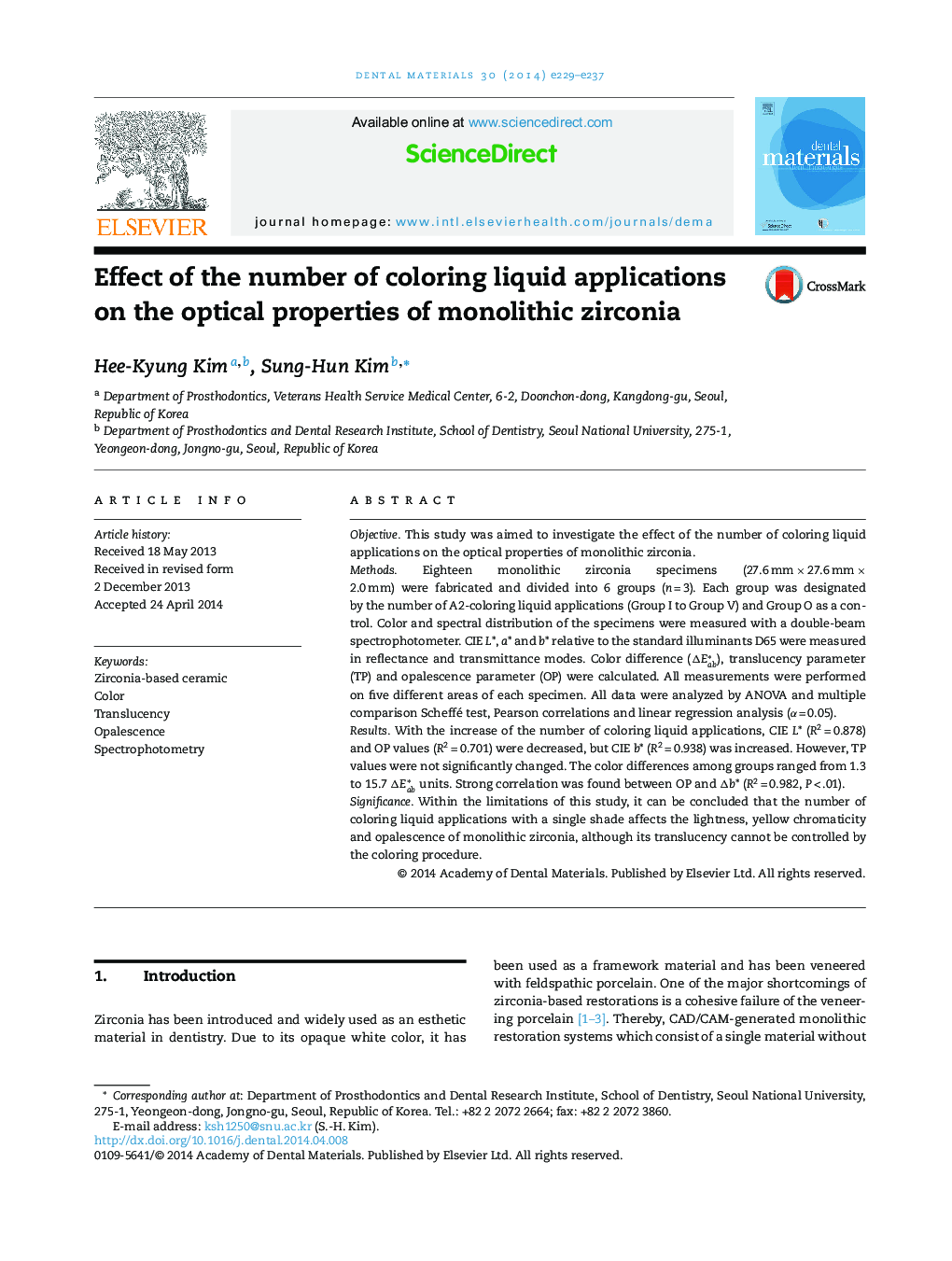| Article ID | Journal | Published Year | Pages | File Type |
|---|---|---|---|---|
| 1421106 | Dental Materials | 2014 | 9 Pages |
ObjectiveThis study was aimed to investigate the effect of the number of coloring liquid applications on the optical properties of monolithic zirconia.MethodsEighteen monolithic zirconia specimens (27.6 mm × 27.6 mm × 2.0 mm) were fabricated and divided into 6 groups (n = 3). Each group was designated by the number of A2-coloring liquid applications (Group I to Group V) and Group O as a control. Color and spectral distribution of the specimens were measured with a double-beam spectrophotometer. CIE L*, a* and b * relative to the standard illuminants D65 were measured in reflectance and transmittance modes. Color difference (ΔEab*), translucency parameter (TP) and opalescence parameter (OP) were calculated. All measurements were performed on five different areas of each specimen. All data were analyzed by ANOVA and multiple comparison Scheffé test, Pearson correlations and linear regression analysis (α = 0.05).ResultsWith the increase of the number of coloring liquid applications, CIE L* (R2 = 0.878) and OP values (R2 = 0.701) were decreased, but CIE b* (R2 = 0.938) was increased. However, TP values were not significantly changed. The color differences among groups ranged from 1.3 to 15.7 ΔEab* units. Strong correlation was found between OP and Δb* (R2 = 0.982, P < .01).SignificanceWithin the limitations of this study, it can be concluded that the number of coloring liquid applications with a single shade affects the lightness, yellow chromaticity and opalescence of monolithic zirconia, although its translucency cannot be controlled by the coloring procedure.
